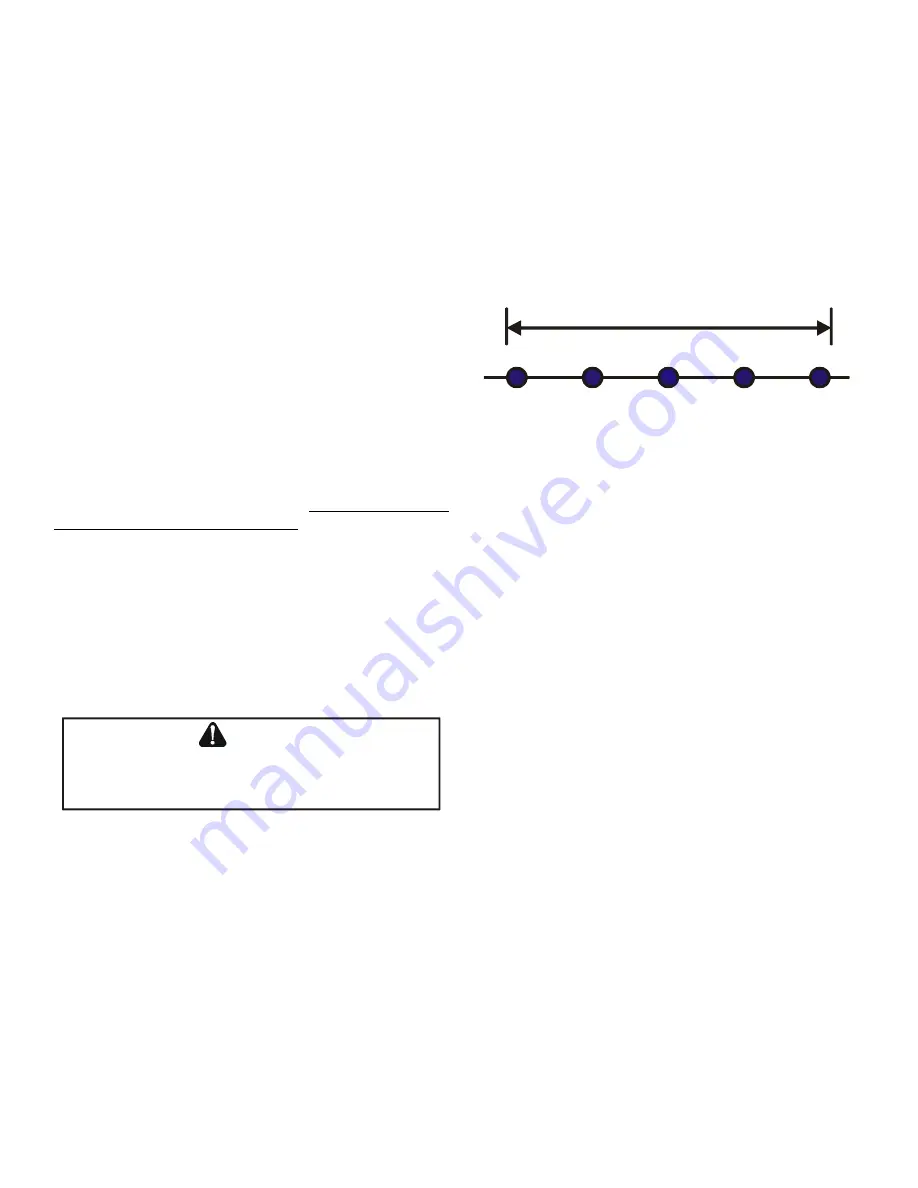
SYSTEM OPERATION
41
Complete information regarding tank sizing for vaporiza tion,
recommended regulator settings, and pipe sizing is avail
-
able from most regulator manufacturers and propane gas
suppliers.
Since propane gas will quickly dissolve white lead and most
standard com mercial compounds, special pipe dope must be
used. Always use a pipe thread sealant approved for all gases.
Refer to the following illustration for typical propane gas
installations and piping.
CIRCULATING AIR & FILTERS
DUCT WORK - AIR FLOW
Duct systems and register sizes must be properly designed for
the CFM and external static pressure rat ing of the furnace. De
-
sign the ductwork in accor dance with the recommended meth
-
ods of “Air Conditioning Contractors of America” Manual D.
Install the duct system in accordance with Standards of the
National Board of Fire Underwriters for the Installation of Air
Conditioning, Warm Air Heating and Ventilating Systems.
Pamphlets No. 90A and 90B.
A closed return duct system must be used, with the return
duct connected to the furnace.
NOTE:
Ductwork must never
be attached to the back of the furnace. For upflow installations
requiring 1800 CFM or more, use either two side returns or
bottom return or a combination of side /bottom. Flexible joints
may be used for supply and return con nections to reduce
noise transmission. To prevent the blower from inter fering
with combustion air or draft when a central return is used, a
connecting duct must be installed between the unit and the
utility room wall. Never use a room, closet, or alcove as a
return air chamber.
CHECKING DUCT STATIC
N
EVER
ALLOW
THE
PRODUCTS
OF
COMBUSTION
,
INCLUDING
CARBON
MONOXIDE
,
TO
ENTER
THE
RETURN
DUCT
WORK
OR
CIRCULATION
AIR
SUPPLY
.
WARNING
Refer to your furnace rating plate for the maximum ESP
(external duct static) rating.
Total external static refers to everything external to the furnace
cabinet. Cooling coils, filters, ducts, grilles, registers must all
be considered when reading your total external static pres
-
sure. The supply duct pressure must be read between the
furnace and the cooling coil. This reading is usually taken by
removing the “A” shaped block off plate from the end on the
coil; drilling a test hole in it and reinstalling the block off plate.
Take a duct static reading at the test hole. Tape up the test
hole after your test is complete. The negative pressure must
be read between the filter and the furnace blower.
Too much external static pressure will result in insufficient air
that can cause excessive temperature rise. This can cause
limit switch tripping and heat exchanger failure.
To determine total external duct static pressure, proceed as
follows:
1. With clean filters in the furnace, use a draft gauge
(inclined manometer) to measure the static pressure
of the return duct at the inlet of the furnace. (Negative
Pressure)
2. Measure the static pressure of the supply duct. (Positive
Pressure)
3. The difference between the two numbers is .4” w.c.
Example:
-1
0
1
2
3
Difference is 4
static reading from return duct = -.1" w.c.
static reading from supply duct = .3" w.c.
total external static pressure on this system = .4" w.c.
NOTE:
Both readings may be taken simultaneously and read
directly on the manometer if so desired. If an air conditioner
coil or Electronic Air Cleaner is used in conjunction with the
furnace, the readings must also include theses components,
as shown in the following drawing.
4. Consult proper tables for the quantity of air.
If the total external static pressure exceeds the maximum
listed on the furnace rating plate, check for closed dampers,
registers, undersized and/or oversized poorly laid out duct
work.
The temperature rise of the furnace must be within the tem
-
perature rise range listed on the furnace rating plate.
BOTTOM RETURN AIR OPENING [UPFLOW
MODELS]
The bottom return air opening on upflow models utilizes a
“lance and cut” method to remove sheet metal from the duct
opening in the base pan. To remove, simply press out the
lanced sections by hand to expose the metal strips retaining
the sheet metal over the duct opening. Using tin snips, cut
the metal strips and remove the sheet metal covering the duct
opening. In the corners of the opening, cut the sheet metal
along the scribe lines to free the duct flanges. Using the scribe
line along the duct flange as a guide, unfold the duct flanges
around the perimeter of the opening using a pair of seamer
pliers or seamer tongs.
NOTE:
Airflow area will be reduced by approximately 18%
if duct flanges are left in factory position. This could cause
performance issues and noise issues.










































